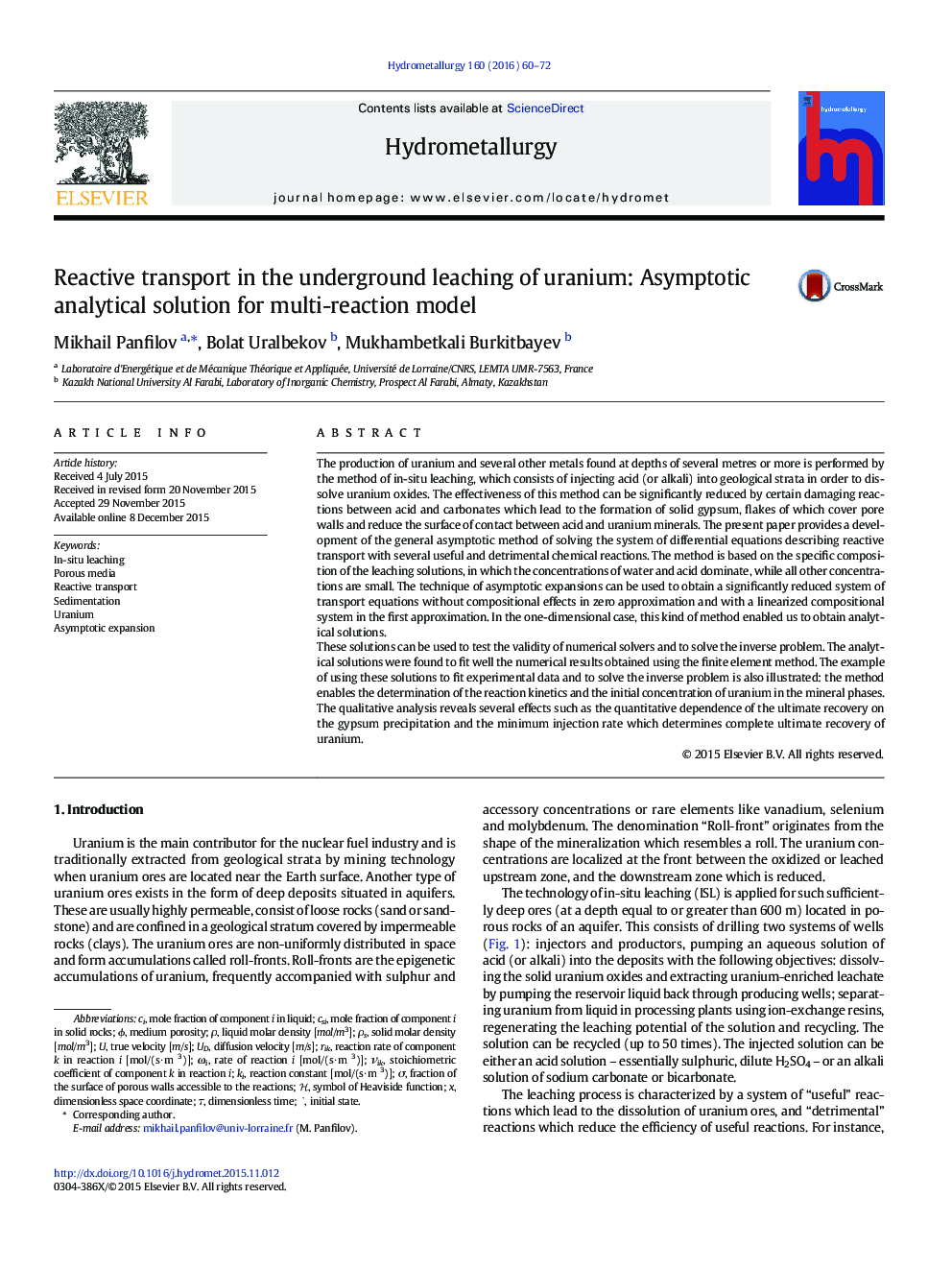| کد مقاله | کد نشریه | سال انتشار | مقاله انگلیسی | نسخه تمام متن |
|---|---|---|---|---|
| 211883 | 462023 | 2016 | 13 صفحه PDF | دانلود رایگان |
• Asymptotic analytical solutions were obtained for the problem of in situ leaching.
• They can be used as exact formulae to justify the validity of numerical algorithms.
• The passivation of reactions by gypsum precipitation was included in the model.
• Laboratory experiments on in situ leaching were performed in a rock sample.
• The data were treated with the theoretical formulae to determine reaction kinetics.
The production of uranium and several other metals found at depths of several metres or more is performed by the method of in-situ leaching, which consists of injecting acid (or alkali) into geological strata in order to dissolve uranium oxides. The effectiveness of this method can be significantly reduced by certain damaging reactions between acid and carbonates which lead to the formation of solid gypsum, flakes of which cover pore walls and reduce the surface of contact between acid and uranium minerals. The present paper provides a development of the general asymptotic method of solving the system of differential equations describing reactive transport with several useful and detrimental chemical reactions. The method is based on the specific composition of the leaching solutions, in which the concentrations of water and acid dominate, while all other concentrations are small. The technique of asymptotic expansions can be used to obtain a significantly reduced system of transport equations without compositional effects in zero approximation and with a linearized compositional system in the first approximation. In the one-dimensional case, this kind of method enabled us to obtain analytical solutions.These solutions can be used to test the validity of numerical solvers and to solve the inverse problem. The analytical solutions were found to fit well the numerical results obtained using the finite element method. The example of using these solutions to fit experimental data and to solve the inverse problem is also illustrated: the method enables the determination of the reaction kinetics and the initial concentration of uranium in the mineral phases.The qualitative analysis reveals several effects such as the quantitative dependence of the ultimate recovery on the gypsum precipitation and the minimum injection rate which determines complete ultimate recovery of uranium.
Journal: Hydrometallurgy - Volume 160, March 2016, Pages 60–72
